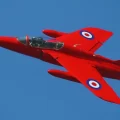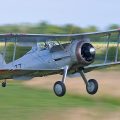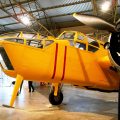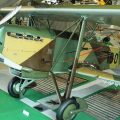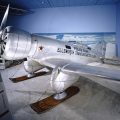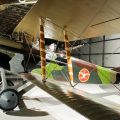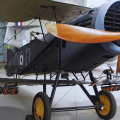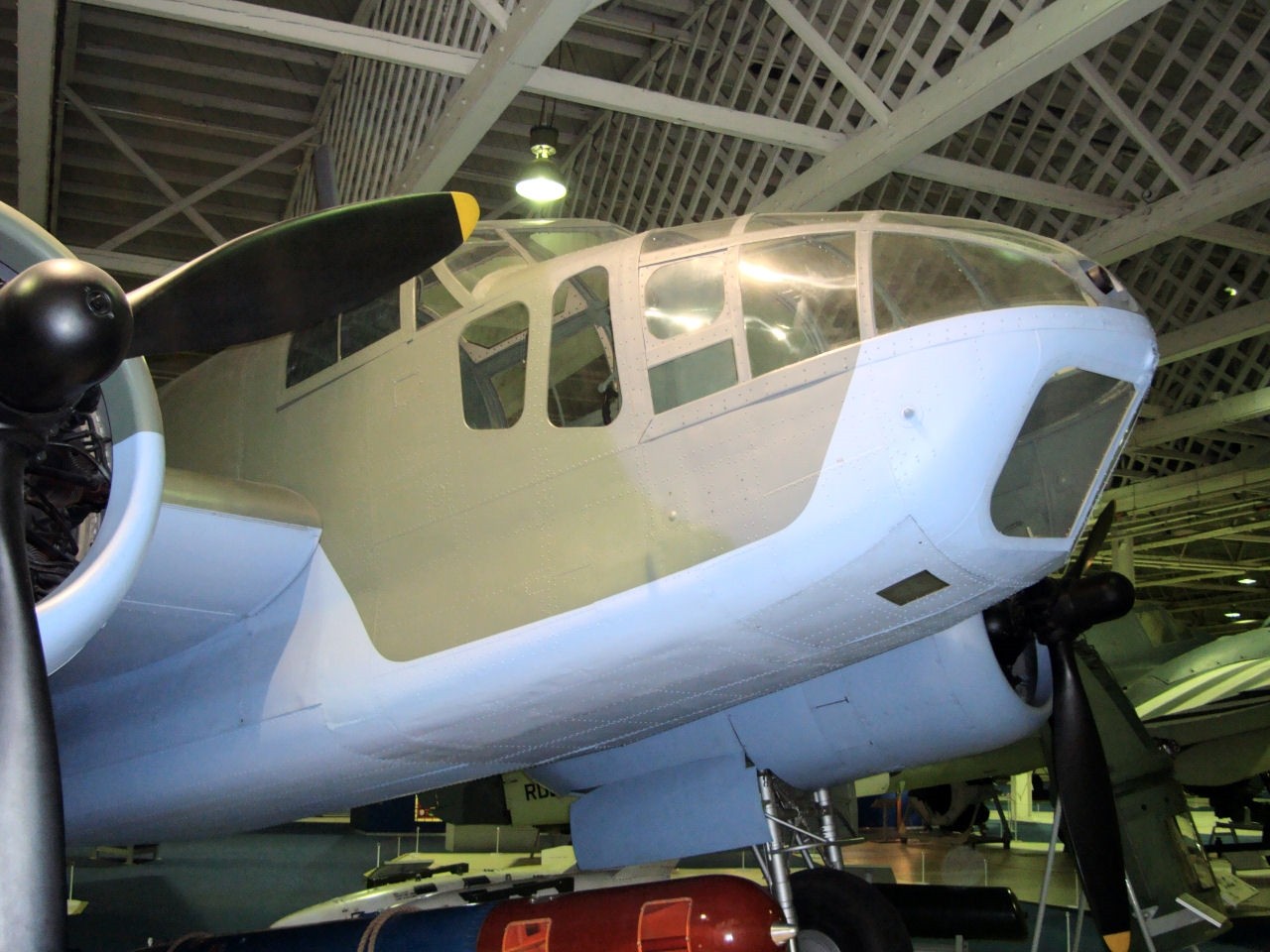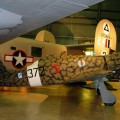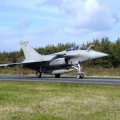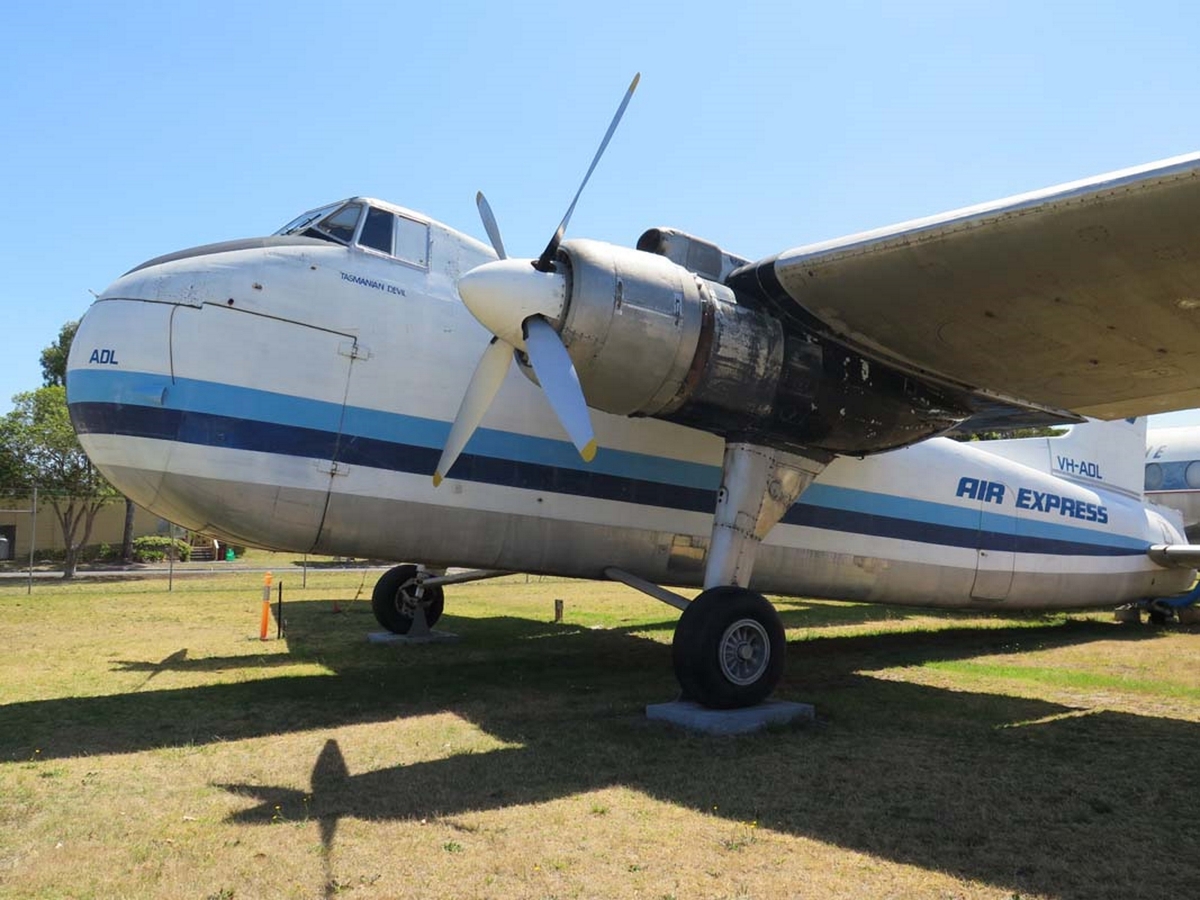
Bristol Freighter | |
|---|---|
| Країні | Великобританії |
| Роль | Cargo aircraft |
| Перший політ | 2 December 1945 |
| Побудований | 214 |
У 201 Bristol Type 170 Freighter was a British twin-engine aircraft designed and built by the Bristol Aeroplane Company as both a freighter and airliner. Its best known use was as an air ferry to carry cars and their passengers over relatively short distances. A passenger-only version was also produced, known as the Wayfarer. The Freighter was developed during the Second World War, having attracted official attention from the British Air Ministry, which sought the development of a rugged vehicle capable of carrying various cargoes, including a 3-ton truck. Various changes to the design were made to accommodate their requirements, but being completed too late to participate in the conflict, the majority of sales of the Freighter were to commercial operators. In response to customer demand, an enlarged version to maximise vehicle-carrying capacity, known as the Bristol Superfreighter, was developed.
Джерело: Bristol Freighter on Wikipedia
| Bristol 170 Freighter Mk 31 Walk Around | |
|---|---|
| Фотографів | Володимир Якубов |
| Локалізацією | Австралійський національний музей авіації |
| Фото | 73 |
Супутні набори:
Знайдіть комплекти на eBay:
Читайте також:
The Bristol Freighter was a British twin-engine cargo aircraft designed and built by the Bristol Aeroplane Company in the late 1940s. It was one of the first new commercial aircraft to fly in Britain after the end of the Second World War, and it had a distinctive box-shaped fuselage with clamshell doors in the nose for easy loading and unloading. The Bristol Freighter could carry both passengers and freight, including cars, and it was used for air ferry services across the English Channel and other short distances. The Bristol Freighter was also exported to several military and civil operators around the world, and it had a long and versatile service life of nearly 60 years. The Bristol Freighter was developed from the Bristol Bombay, a pre-war bomber transport, and it had a high wing with two Bristol Hercules radial engines. The first prototype flew on 2 December 1945, and a passenger-only version called the Wayfarer followed in April 1946.
The Bristol Freighter was produced in several variants, with different engine models, wing spans, fuselage lengths and payload capacities. The most common versions were the Mk 31 Freighter, which could carry 44 passengers or 16 passengers and 5,000 lb of freight, and the Mk 32 Superfreighter, which had a longer nose and could carry three cars and 20 passengers. The Bristol Freighter was mainly used by Silver City Airways, a British airline that operated air ferry services between England and France, Belgium, Germany and the Channel Islands. Silver City Airways carried over two million passengers and half a million cars on its Bristol Freighters between 1948 and 1962. The Bristol Freighter was also used by other airlines, such as British United Air Ferries, SAFE Air, Trans Australia Airlines and Aer Lingus. The Bristol Freighter was also adopted by several air forces, such as those of Argentina, Australia, Burma, Canada, New Zealand and Pakistan. The Bristol Freighter was a rugged and reliable aircraft that could operate from unprepared airstrips and carry a variety of cargoes. It was also one of the first aircraft to offer car ferry services, which became popular in Europe after the war. The Bristol Freighter was retired from service in 2004, when the last surviving example flew to a museum in Canada.
Views : 1746



